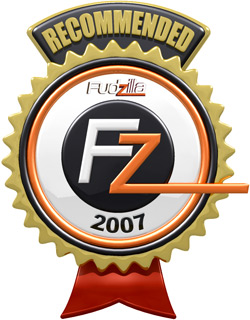

Review: Geforce 8800 GTS 512MB is ultra fast
Today, the 11th of December, we’re officially talking about the new Geforce 8800 GTS based on the G92 graphics chipset. Although it bears the same name as its predecessor, the new 8800 GTS series is different from the old 8800 GTS based on the G80 core. The new card has a somewhat improved architecture and more Shader units. The new speeds are 650MHz for the core, 1625MHz for the Shaders, and 970MHz for the memory. This time around the card packs 512MB of GDDR3 memory, not 640MB as before.
Previous versions were bound to use 320MB or 640MB of memory due to a non-standard 320-bit memory controller. Today’s 8800 GTS 512MB has a 256-bit memory controller, which results in a lower memory bandwidth.
We tested the MSI NX8800 GTS, which had the core overclocked to 730MHz, with the memory at 1,944MHz and the Shaders at 1,825MHz. This is significantly faster than Nvidia’s suggested default speeds.

The card is dual slot, just like the previous version, except that it has a brand new cooler design. Nvidia did their job and manufactured a dual slot cooler that's much quieter than the 8800 GT’s single slot solution (the 8800 GT is also based on G92). The fan is quite large, and that means better cooling. The fan is at a slight angle and pointed at the core, which probably results in better cooling.

Power is handled by a single 6 pin power connector. The rear I/O side features two yellow DVI connectors; both are dual link with a maximum resolution of 2,560x1,600, and a single TV-out port.

The new 8800 GTS is aimed at users who prefer higher resolutions, because only then will you see the performance difference between this card and the more popular (not to mention much lower priced) 8800 GT. If you’re waiting on an 8800 GT, and it’s really tough to get one, the new 8800 GTS will be a good alternative if you can afford the cost difference. The 8800 GT is slower, the core is clocked at 600MHz, and the memory is clocked at 900MHz.
The 8800 GT overclocks well, and we’ve seen many cards running at the 8800 GTS speed, or even higher. We compared the 8800 GT at 700MHz to our 8800 GTS, and the results we got are quite interesting.
Where the 8800 GT features 112 Stream processors, the 8800 GTS has 128. It’s a direct result of enabling the eighth cluster on the G92 GTS core. Each cluster packs 16 Stream processors.
The cards based on the G92 core are DirectX 10, PCI Express 2.0 and all are manufactured in the 65nm process, and they feature VP2 (Video Processor 2) within the chip. You couldn’t find this feature in G80 cards because it was exclusive to Nvidia's low-end cards. This basically means that you get PureVideo HD acceleration support when you're playing high-definition video files, as well as post-processing done entirely in hardware, which takes the load off your CPU.
MSI's 8800 GTS has the same retail packaging and bundle as the 8800 GT that we tested here.


We tested MSI's NX8800 GTS card, based on the G92 core, as well as a reference 8800 GT. To make the results more interesting we incorporated the results of our recently tested Gainward Bliss 8800 GT Golden Sample GLH running at 700MHz. It’s important to note that the default speed of the 8800 GT cards is 600MHz. The 8800 GTS really proved its supremacy over the 8800 GT’s at default speed, but the Gainward card did really well at its overclocked setting.
3DMarks

Gaming

In Company of Heroes, the performance difference between the MSI 8800 GTS and the 8800 GT is clearly noticeable. At 1,024x768 the MSI 8800 GTS beats the reference 8800 GT by 9 percent and the advantage kept growing. At 1,280x1,024 it was faster by 17 percent, at 1,600x1,200 by 20 percent and at 2,048x1,536 by 25 percent. We clearly see that the higher the resolution is, the better the 8800 GTS performs. Gainward closely followed the 8800 GTS, lagging behind some 6 percent at 1,600x1,200.

In F.E.A.R. the difference is minimal, the 8800 GTS and the overclocked 8800GT are identical, whereas the reference 8800 GT is 17 percent slower.

World in Conflict is a demanding game, and the maximum difference was 4 percent. Sadly, during gaming, 4 percent accounts for a single frame or more.


It’s important to note that MSI’s card is overclocked and in newer games at higher resolutions, it will even beat the GTX series. Crysis serves as a proof of that claim. The cards hit a maximum of 80 degrees Celsius during testing, and stay quiet at all times. This time around we didn’t have much time on our hands, but we shall definitely put it up against the good old 8800 GTS 640 soon, so expect some more details in a future review.
Conclusion
Priced at €330, it’s definitely appealing, but beating the cheaper 8800 GT cards will prove to be a difficult task. In newer games, the MSI 8800 GTS 512MB even beats the 8800 GTX, and it will prove to be a great alternative for high-end card lovers.
If you already own an 8800 GTX there’s no need to get rid of it, but as you can see, playing Crysis results in the 30-something frames per second.
The dual slot cooler is ultra quiet, and it performs great, so the card was stable the whole time. If you find one, we sincerely recommend it because it’s the best card that you can get this year, and the price is not too steep, either.
So, without further ado, we dub MSI’s 8800 GTS 512MB a Fudzilla Recommended card.

